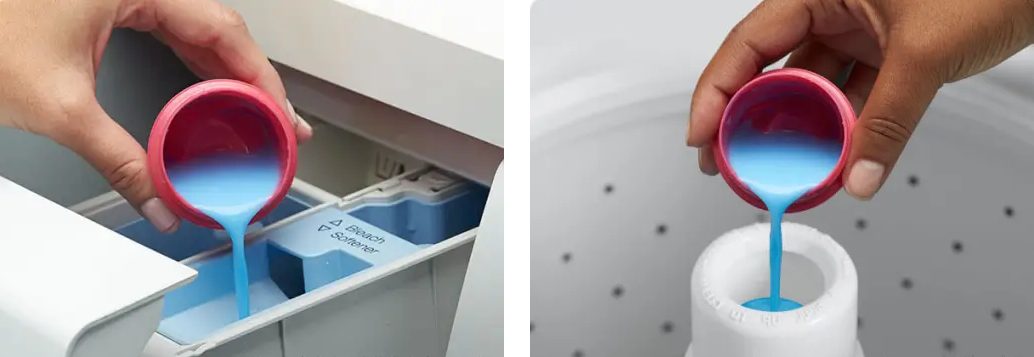Last Updated on March 30, 2023
We generally replace our sheets when they tear or shred.
But sometimes sheets lose their magical softness well before that. Is it time to throw them out, and buy a new set?
Maybe not. Maybe your current sheets can be saved, and restored back to how they once were – soft, shiny, and supple!
If your sheets have turned dry, scratchy, bumpy, or just downright uncomfortable, you don’t necessarily need to spend money on a new set. You probably just need a sheet overhaul.
With a few tools and a bit of time, you can actually turn back the clock and get some more life out of your sheets.
Let’s find out how…
1st Step – Get rid of the bumps
Over time, your sheets – like any other type of fabric – will develop a scratchy and bumpy surface.
Pilling, fuzz balls, old fabric softener residue, etc. – all contribute to that dry or crusty surface that is anything but cozy and inviting.
So the first step is to shave your sheets. For this step, you’ll need a good fabric defuzzer.

Lay your sheet flat and taught, and run the fabric shaver across the surface, with light but firm pressure.
There’s no need to run it across the entire sheet. Run your fingers across the surface and look for the bumpy or fuzzy sections.
Shave the obviously rough areas until they are unblemished, then flip the sheet over, and repeat on the opposite side. For flat and fitted sheets, this process should take a few minutes each. Duvet covers will take a bit longer.
For pillowcases and shams, you should be able to shave both sides in less than a minute.
2nd Step – Washing out any old residues
Sheets become crusty and dry over the course of many wash cycles.
One reason is the accumulation of fabric softener residue. In this second step, you’ll want to completely strip your sheets of any residue build-up.
Your current detergent is fine for regular laundry, but this time around, we’ll need something a little tougher. We’re going to need some vinegar!
Regular white vinegar will work, but ideally, you should use cleaning vinegar.

Pour a 1/2 cup of vinegar into your washing machine, and run it like you normally would. No need to add your regular detergent.
Vinegar does an excellent job of removing what regular detergents leave behind.
Fabric softener residue, build-up from hard water and calcium, etc. – all of these contribute to a hardened and crusty sheet surface, and don’t always come out with regular detergent.
We’re not done with the washing machine yet, so don’t go too far. There’s one step left.
3rd Step – The fabric softener
We shaved the sheets, we washed the sheets, now it’s time to soften and protect your sheets.
You might normally use dryer sheets to soften your laundry, but for the purposes of this sheet overhaul, switch to fabric softener.
Fabric softener lubricates the fibers in the fabric and gives it some bounce – which eliminates that dry feeling. It will also bring back that lustrous sheen your sheets used to have. Dryer sheets mainly just help with static cling.
You might never go back to dryer sheets again.

If you have a front-loading machine, fill your dispensers with the fabric softener before you start the machine. Similarly, if your machine has a column with a cup, fill the cup with the softener.
If you have neither, you’ll need to wait for the rinse cycle to add your fabric softener. This article about fabric softener will explain all of this if you’re not sure about what to do.
The hard work is basically done – just wait for the rinse cycle to finish.
4th Step – The dryer
At this point, the actual overhaul and restoration are complete. Remove your sheets from the washing machine and toss them into your drying machine as you normally would.
You can skip the dryer sheets this time.

What if this doesn’t work?
The fabric shaver will definitely work as far as removing bumps and fuzz.
And for the majority of people, steps 2 and 3 will work like a charm. But what if your sheets don’t return to their once supple and shiny exterior? Then what do you do?
Let’s go through a few common issues and their possible solutions.
Do your sheets still feel dry?
For fabric that has become weathered, it might take a few applications of fabric softener for the individual fibers to bounce back into shape.
If you continue using the fabric softener as directed, the surface quality of your sheets should improve over the course of the next few washes.
Do your sheets still have a dull appearance?
If your sheets are white, brightening them isn’t hard to do.
If you’ve tried bleach, and your sheets are still dull – or yellowed – you can try “bluing” them. Bluing is a process that brightens whites by turning them blue.
This shade of blue appears to your eyes as bright white. Bluette is a popular choice when it comes to making whites brighter.

Are your sheets still a bit crusty?
Depending on how long you’ve had your sheets, they maybe have gone through multiple dozens of wash cycles.
If you were to wash your sheets once a week, that would be a total of about 100 washes over a two-year period.
That’s a lot of wash cycles!
The fabric softener residue (particularly from dryer sheets) and hard water build-up are sometimes a bit too much for the vinegar to handle by itself.
So if your sheets aren’t back to their original form after you go through steps 1 to 3, try soaking them in hot water for about 15-20 minutes before you wash them on your next laundry day. Add the vinegar as you did before, and just let them sit.

(Soak them separately if they’re colored sheets).
For extra crusty residue and deposits, that extra soak in the vinegary water might be enough for them to melt away. Once you start your washing machine, repeat the fabric softener step like you did the first time.
Optional 5th step
Sheets are like any other type of fabric – they develop wrinkles too!
And while the dryer will usually get most of your wrinkles out, there might be just enough to prevent your sheets from having a crisp and even surface.
A wrinkly surface will prevent even the most luxurious sheets from looking shiny and new.
If you are inclined to do so, ironing your sheets is a fabulous final step in renewing your old sheets. If you happen to have a fabric steamer, you can iron a whole set of sheets in just a few minutes.


My bedding is only couple of months old .& bobbly I only wash maybe once a month as my boy has asthma I dry outside